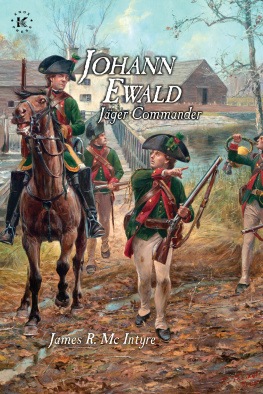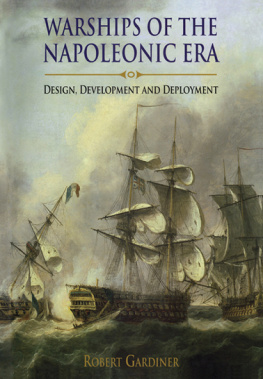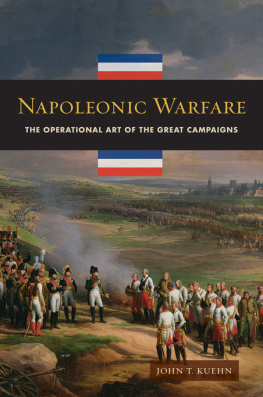THE BACKGROUND OF NAPOLEONIC WARFARE
THE THEORY OF MILITARY TACTICS IN EIGHTEENTH - CENTURY FRANCE
R OBERT S. Q UIMBY
This edition is published by PICKLE PARTNERS PUBLISHINGwww.picklepartnerspublishing.com
To join our mailing list for new titles or for issues with our books picklepublishing@gmail.com
Or on Facebook
Text originally published in 1957 under the same title.
Pickle Partners Publishing 2015, all rights reserved. No part of this publication may be reproduced, stored in a retrieval system or transmitted by any means, electrical, mechanical or otherwise without the written permission of the copyright holder.
Publishers Note
Although in most cases we have retained the Authors original spelling and grammar to authentically reproduce the work of the Author and the original intent of such material, some additional notes and clarifications have been added for the modern readers benefit.
We have also made every effort to include all maps and illustrations of the original edition the limitations of formatting do not allow of including larger maps, we will upload as many of these maps as possible.
Acknowledgments
It is not possible to mention here all those who have given assistance to the author in the preparation of this book. The author gratefully acknowledges special indebtedness to Professors Garrett Mattingly and Stebelton Nulle who have read the whole manuscript, to Professor Shepard Clough who has read parts of it, and who have all made many valuable suggestions; to Lura M. Quimby who has also made many helpful suggestions; to Professor Paul Evans, Professor Walter Dorn, and President Charles Cole for encouragement and aid at various stages in the undertaking; and to Professors Marjorie Gesner, Martha Layman, and John Reinoehl who have helped in the tedious task of manuscript revision and proofreading. The author has benefited much from the courtesy and assistance which he received at the Harvard University Libraries, the Library of Congress, the National War College Library, and, above all, at the Library of the United States Military Academy. Colonel Morton and his staff by their warm welcome and unfailing helpfulness make research at West Point a great pleasure. It is necessary to point out that the author is solely responsible for the conclusions and any errors in the text. Finally, Albert V. Quimby and Christopher S. Quimby helped in the preparation of the drawings for the figures.
R . S . Q .
East Lansing, Michigan
June 24, 1956
Introduction
The period from the opening of the War of the Spanish Succession to the meeting of the Estates-General is generally looked upon as a period of decadence in the history of the French Army. Compared with the great days of Louis XIV or with those of the Revolution and Napoleon this estimate seems correct enough. It was a period of many humiliations. The disasters inflicted upon France by Marlborough and Prince Eugene were followed by the much more humiliating failures of the Seven Years War. Yet the record is not without its glorious moments. During the War of the Austrian Succession, a series of brilliant successes was won under the leadership of the great Saxe.
If the combat record of the French Army was, to say the least, uneven during the eighteenth century, such was not the case with its intellectual achievements. The French Army stood foremost among all those of Europe in this respect. Throughout most of the years of the century, there was a great intellectual ferment within the Army leading to major developments in ideas and in material improvement.
The reasons for this intellectual activity are to be sought in the fact that progress in military developments, tactical and material, is most frequently made by defeated armies. The victorious army remains content with the organization and methods which have given it victory. The victory is proof of their excellence. The defeated army, however, left with nothing but the memory of failure, seeks to analyze the causes of its defeats, the defects within itself, and to consider possible remedies. Developments in the Prussian Army after 1806 and in the German Army after 1919 are cases in point, but the outstanding example of this is to be found in the history of the French Army during the eighteenth century.
Within a few years after the War of the Spanish Succession, books began to appear, pointing out defects in the tactics then in use and proposing changes. After the Seven Years War, the number of such books greatly increased. The result was to stimulate an ardent and at times acrimonious debate. Book countered book; pamphlets and memorials multiplied. Gradually, through the abandonment of more extreme ideas, a compromise was worked out. Embodied in the Ordinance of 1791, this became the basis for the tactics of the Wars of the French Revolution and of Napoleon.
There is another probable reason for the activity in the field of military ideas. It is a natural outgrowth of the intellectual climate of the times. It would be curious if a century which devoted itself so strongly to better government and legislation did not turn to military questions. {1} The great interest in ideas, characteristic of the times, carried over into the field of military science, leading to a prolonged and intensive examination of the military institutions of France. The military writers are characteristic of the Age of Enlightenment. The marks of the doctrinaire spirit of the Age are very much apparent in some of them. Others reflect the keen interest of the Age in experimentation, wishing to try out various ideas and accept those which proved workable. Military writing which regarded tactical problems as mere problems of geometry also showed the influence of the mathematical ideas of the time. Mathematics was also applied more appropriately to the special problems of artillery, a field in which the French came to pre-eminence during the course of the century.
Tactical ideas were debated vigorously in the Army. They influenced the large number of drill regulations which were issued after the middle of the century. Before adoption some of these ideas were tested in camps of instruction. They were current, therefore, among a very large number of officers in the Army. This fact is important because it helps to explain the tactical developments in the Revolutionary armies.
The sharp break alleged to have existed between the Army of the Old Regime and that of the Revolution is greatly exaggerated. There was a very large degree of continuity. For example, the old regiments were retained, though many of the foreign ones were recalled or disbanded. The basic drill book, the Ordinance of 1791, was drawn up after the outbreak of the Revolution, and contained the results of three-quarters of a century of tactical debate. The Volunteers of 1791 were trained under this ordinance, as well as the line regiments with which they were subsequently brigaded. The soldiers of the Revolutionary and Napoleonic Wars did not feel that this ordinance differed much from the tactics which were used in the field. Although the ordinance was the subject of many criticisms, these were so diverse that no current of opinion developed, strong enough to bring about a change. {2} It was not until 1831 that a new drill book appeared.










